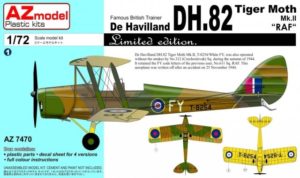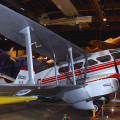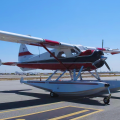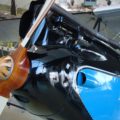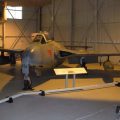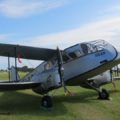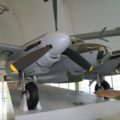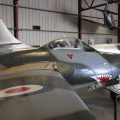Teh de Havilland DH.82 Σκώρος τίγρης is a 1930s biplane designed by Geoffrey de Havilland and was operated by the Royal Air Force (RAF) and others as a primary trainer. The Tiger Moth remained in service with the RAF until replaced by the de Havilland Chipmunk in 1952, when many of the surplus aircraft entered civil operation. Many other nations used the Tiger Moth in both military and civil applications, and it remains in widespread use as a recreational aircraft in many countries. It is still occasionally used as a primary training aircraft, particularly for those pilots wanting to gain experience before moving on to other tailwheel aircraft. Many are now employed by various companies offering trial lesson experiences. The de Havilland Moth club founded 1975 is now an owners’ association offering a mutual club and technical support.
Πηγή: de Havilland DH.82 Σκώρος τίγρης στο Wiki
...
Περισσότερες πληροφορίες:
The de Havilland DH.82 Tiger Moth is a biplane trainer aircraft that was widely used by the Royal Air Force and other air forces in the British Commonwealth during the 1930s and 1940s. It was designed by Geoffrey de Havilland and built by the de Havilland Aircraft Company. The Tiger Moth has a distinctive appearance with its fabric-covered wooden airframe, open cockpit, fixed landing gear and inverted Gipsy Major engine. It is capable of aerobatics and can be fitted with floats or skis for operation on water or snow. The Tiger Moth was originally developed from the earlier de Havilland DH.60 Moth, which was a successful light aircraft in the 1920s.
The DH.82 was designed to meet the specifications of the Air Ministry for a new primary trainer for the RAF. It first flew in 1931 and entered service in 1932. More than 7,000 Tiger Moths were produced in Britain, Canada, Australia, New Zealand and other countries. The Tiger Moth was used for basic flight training, navigation, instrument flying, wireless operation, gunnery and night flying. It also served as a liaison and observation aircraft during the Second World War. Many famous pilots learned to fly on the Tiger Moth, including Douglas Bader, Amy Johnson and Charles Lindbergh. The Tiger Moth remained in service with the RAF until 1952, when it was replaced by the de Havilland Chipmunk. Some Tiger Moths continued to fly as civilian aircraft until the 1970s. Today, many Tiger Moths are preserved and flown by enthusiasts around the world.

